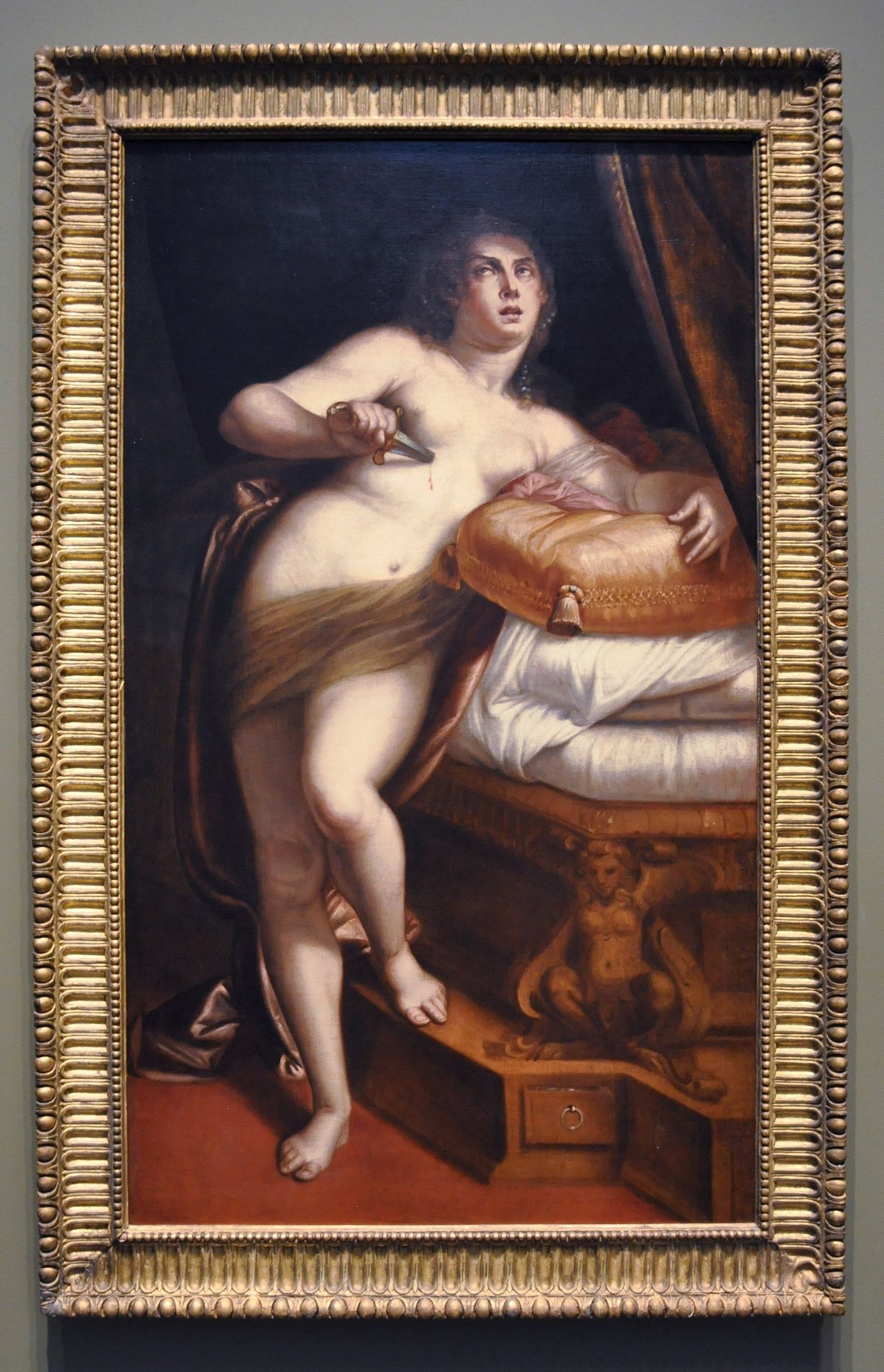This image has been scaled down to fit your computer screen. Click on it to show it in the original size.
 |
 |
Luca Cambiaso
Moneglia, Genoa, 1527-El Escorial, Madrid, 1585
Suicide of Lucretia, ca. 1565
Oil on Canvas.
The ancient Roman historian Livy narrates the fortune of Lucretia, who after being violated by the son of Tarquinius Superbus told her husband of the outrage and the killed herself. The result was an uprising against the Tarquins and their expulsion from Rome. Her virtue, self-sacrifice, and its civic consequence remained archetypes through the Renaissance.
In this picture, the construction of the figure is more complicated, the description of surfaces more elaborate, and the articulation of the drama, in both general movement and expressive vocabulary, more explicit. Of startling theatricality, and somewhat ungainly power, it represents Cambiaso at his most self-consciously classical in a mode for historical and mythological subjects. Common in the kind of monumental palace decoration he popularized in Genoa, this mode rarely appears in his canvases.